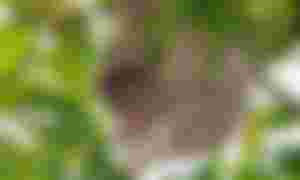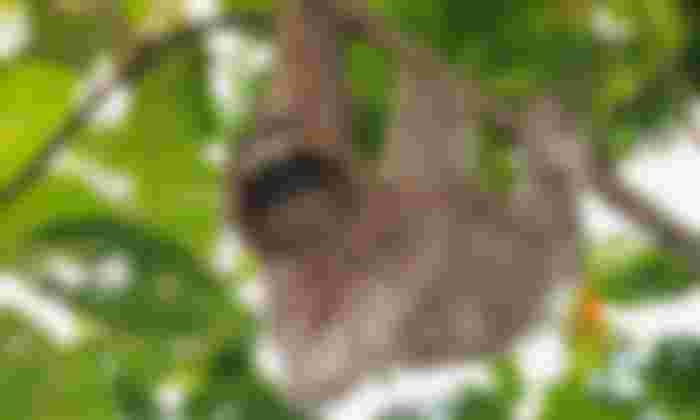What is the old broom doing on the branch of that tree?

What a surprise the interlocutor learned that what he believed to be an “old mop” was in fact an animal - a mammal!
For the first time in his life, he saw laziness in his native country. Sloths live in the tropical forests of Central and South America. They are among the slowest of all beings. This slowness is attributed to the low body temperature. For most of their lives, sloths hang upside down by the arms and legs, sit on the fork of a tree, or support their back on a lower limb. When in trees, their claws are always attached to a visible branch. For sloths, eating, sleeping, yes mating and calving are ups and downs too. Usually only one baby is born lazily at a time.Carried to the breast by the mother, the baby clings to her long hair. Adult sloths are about the size of large domestic cats.
Its long arms and legs end in curved claws and are about seven inches long. The thick hair of the pigeon is opposed to other mammals, from the stomach to the back. There is something else in its laziness. You may have heard the phrase “A rolling stone never picks up moss”. But can you imagine an animal so slow that plants grow in its hair? Well, that's sloths for you!
During the rainy season, algae bloom abundantly in the cloudiness of the hair and give it a greenish color. Besides helping this plant to grow, the lazy hairs also protect an insect, a moth that looks like a meal made of clothes. The reason remains a mystery. No one could understand why moths live on lazy hair. They do not feed there and no eggs or larvae are found on the skin. The entire life of a sloth seems to go by in slow motion. They fall asleep or sleep about eighteen hours a day and are more active at night. Since the sloth covers a distance of sixty kilometers by moving from hand to hand, it may intentionally attach claws to the tree's legs. It may take over a month and a half. On the ground, the sloth moves even slower, as it is primarily intended for a life in trees, and not for walking. After grabbing the claws, laziness continues.
What may take seven seconds for the animal in the trees may take a full minute on the ground. Surprisingly, however, sloths are faster in water. They swim with their bodies raised, alternately swinging their arms. You would think that a lazy creature like a sloth would hardly survive a day. But it's not helpless. The animal can defend itself with its long claws and sharp teeth. Seen from the ground, a sloth can easily be mistaken for a termite mound or a pile of dead leaves. As a result, the animal can often escape detection by predators. In addition, hard skin, a thick layer of shaggy, spiky hair and 23 pairs of ribs protect the animals' vital organs. What's especially surprising about sloths is their ability to survive injury, abuse, and even doses of poison that would kill other mammals.
Two basic types Take a look at the unusual sloth. Think about long arms. When each of the arms ends in two long, curved claws, examine a two-toed sloth. The longest arms of the three-pointed pigeon are fitted with three curved claws and each leg in both variants. There are also many other characteristics that distinguish the two basic types of sloths. “Two toes” are bigger and don't have a tail. The "three toes", on the other hand, have a stone-shaped tail and are fitted with two or three additional vertebrae on the long neck.
The total number of vertebrae - nine - is unusual for mammals, which almost all have seven vertebrae around their necks. Because they have several vertebrae around their necks, the “three-toed fingers” can hang upside down and hold the head almost up. He can turn his head in a 270 degree arc, almost a full circle! "Three fingers" was not good in zoos. This is mainly due to the fact that their diet is limited to the shoots, leaves and branches of the Cecropia tree.
Two Fingers are not as restrictive in their eating habits and have adapted much better to captivity. Of the two basic types, "two fingers" is the most active. When threatened, it attacks quickly with its long arms, causing severe injuries to the curved claws. It can also bite violently with its eighteen teeth. Faced with this danger, the "three fingers" move more slowly and rarely bite. "Two fingers" is even less strange than its parent. First, it falls from the head of a tree. But "three fingers", when they move from a branch to the trunk of the tree, rotates first and then backs up into the tree. Strange but fascinating, the world of latency has been turned upside down.
Lead image credits: https://nationalgeographic.com
